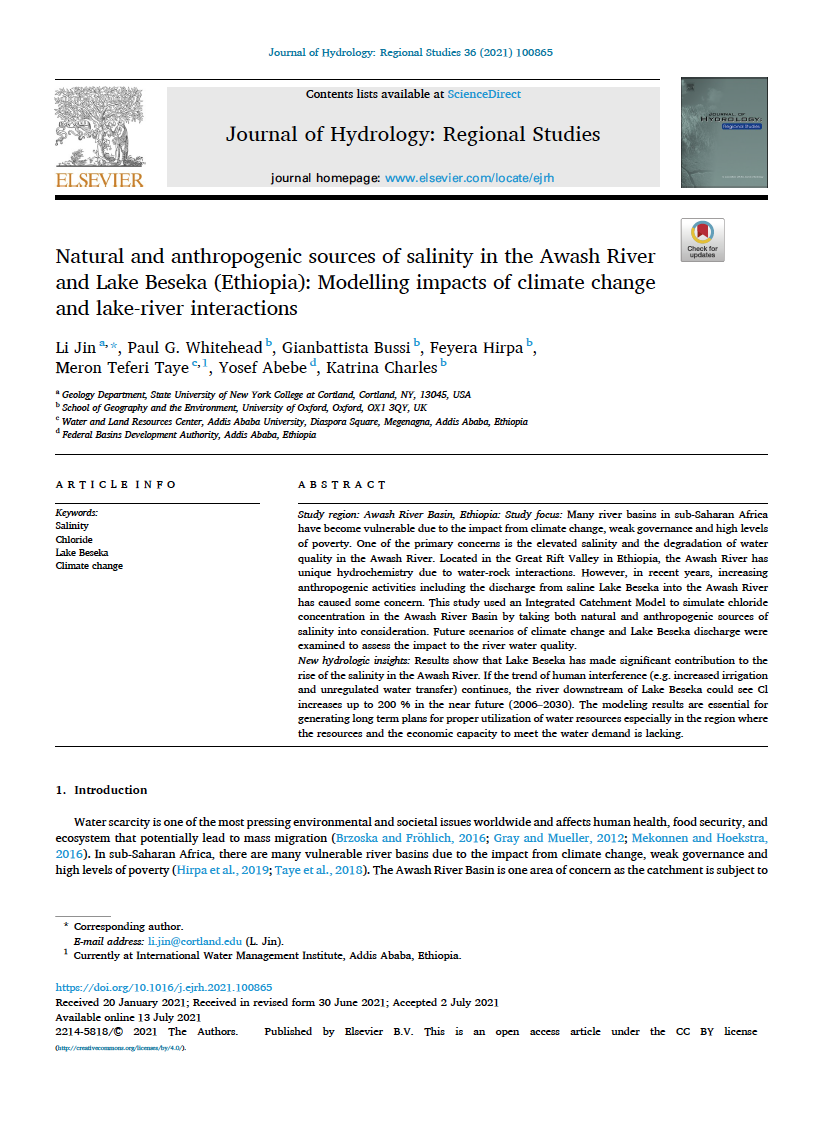Authors: Li Jin, Paul G. Whitehead, Gianbattista Bussi, Feyera Hirpa, Meron Teferi Taye, Yosef Abebe, Katrina Charles
Many river basins in sub-Saharan Africa have become vulnerable due to the impact from climate change, weak governance and high levels of poverty. One of the primary concerns is the elevated salinity and the degradation of water quality in the Awash River. Located in the Great Rift Valley in Ethiopia, the Awash River has unique hydrochemistry due to water-rock interactions. However, in recent years, increasing anthropogenic activities including the discharge from saline Lake Beseka into the Awash River has caused some concern.
This study used an Integrated Catchment Model to simulate chloride concentration in the Awash River Basin by taking both natural and anthropogenic sources of salinity into consideration. Future scenarios of climate change and Lake Beseka discharge were examined to assess the impact to the river water quality.

